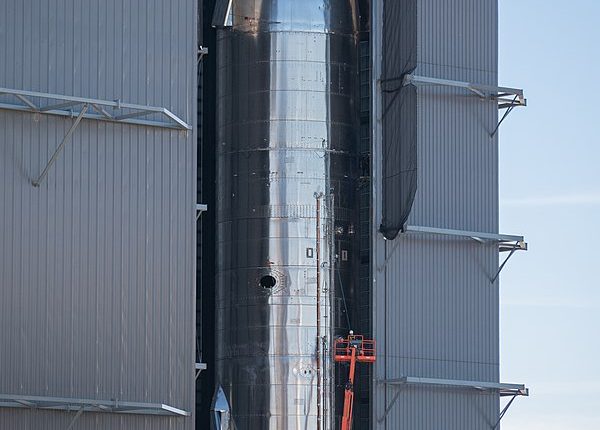The SN10, SpaceX’s newest Starship prototype, has some pretty big shoes to fill as the space company continues to march towards its goal of colonizing Mars. On February 25, it was fired up for the second time, continuing its test-flight prep.
The SN10 is being counted upon not to go down the path of its predecessors, the SN8 and SN9, which flew sky-high but failed to land, ending in a spectacular explosion.
The three Raptor engines of the newest Starship prototype were ignited for a few seconds in a “static fire” trial at SpaceX’s South Texas site, near Boca Chica Village on the state’s Gulf Coast.
The SN10 is the latest iteration of SpaceX’s Starship and the successor of the SN9. Starship prototypes have progressed from making short, low-altitude “hops” to high-altitude flight demonstrations. The SN8 and SN9 have both flown to altitudes comparable to where commercial jets cruise, but then came in for explosive hard landings, ending in fireballs. If the SN10 emulates their feat, it may give SpaceX a headache to think about.
While the SN9 took flight on February 2, the SN8 flew a month prior, and despite its failure to record a proper landing, it was able to complete a number of key milestones that were crucial to both its development and Elon Musk’s plans to facilitate point-to-point travel around the globe, to the moon, Mars and beyond.
Musk shared two images of the SN10 as work was being done on Thursday, with the caption, “Starship to the moon.”
Earlier, SN10’s first static fire on February 23 revealed an issue with one of the three Raptor engines. SpaceX quickly swapped out the engine and got the prototype ready for another static fire, which occurred on Thursday. Musk, however, had warned earlier that such “rapid unscheduled disassembly” events were not unexpected and were part of the development process.
The crash landing of the SN8 in December 2020 had left SpaceX in a fix after it was revealed that the prototype had been launched without all required approvals from the Federal Aviation Administration (FAA), resulting in a delayed license for SN9. After the SN9 followed its predecessor in a spectacular crash landing, the FAA announced that it would be investigating the “mishap.” On February 19, the investigation was closed and the SN10 test flight was approved.
If the test flight of the SN10 went without a hitch, the newest prototype could take to the skies very soon, flying about 6.2 miles in the air before landing.
SpaceX hopes to launch a prototype into orbit sometime this year, and Musk is optimistic about the chances of flying people regularly into space by 2023. This could very well mean that the final, operational Starship, a 165-foot-tall spacecraft consisting of six Raptors, could be flying very soon.
The Tech Portal is published by Blue Box Media Private Limited. Our investors have no influence over our reporting. Read our full Ownership and Funding Disclosure →






